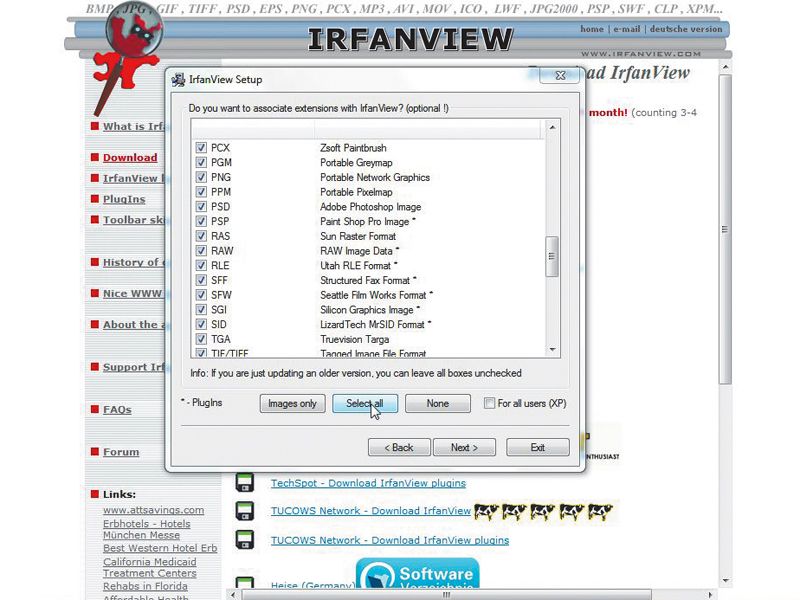

- #Photo batch commands to save imkages for web install#
- #Photo batch commands to save imkages for web pro#
- #Photo batch commands to save imkages for web code#
- #Photo batch commands to save imkages for web mac#

#Photo batch commands to save imkages for web pro#
To access the Pixelmator Pro scripting dictionary, choose File > Open Dictionary in the Script Editor and choose Pixelmator Pro from the list. The dictionary lists all the commands, elements, and properties related to the specific actions, tools, and settings within Pixelmator Pro.
#Photo batch commands to save imkages for web mac#
See Mac Automation Scripting Guide to learn more about scripting syntax. Lexical conventions, keywords, characters, symbols, and other language elements that are used to write statements and commands.
#Photo batch commands to save imkages for web install#
There's nothing special you need to do to install the Script Editor - it comes with your Mac.

Here is where you write, edit, and compile scripts. The key things you need to write a script for Pixelmator Pro are: AppleScript uses an English-like language to tell apps what specific actions need to be performed, so it's pretty easy to write and edit scripts with very little or no programming experience whatsoever - often, you can understand what a particular script does by simply reading it. Tasks from other scriptable apps can also be combined into a workflow, making the automation options virtually unlimited.
#Photo batch commands to save imkages for web code#
See our tutorial on batch processing images with Shortcuts to learn more about working with the Shortcuts app or check out a collection of sample shortcuts created by the Pixelmator Team for inspiration.ĪppleScript is an Apple-created programming language that lets you automate different tasks in Pixelmator Pro by giving it explicit commands in code form. In the Shortcuts app, you'll find 28 different Pixelmator Pro actions that you can use on their own or in conjunction with actions from other apps to unlock even more workflow possibilities.

Images are processed in the background, so Pixelmator Pro itself doesn't even need to be running. The Shortcuts app (available on macOS Monterey) offers one of the quickest and easiest ways of processing multiple images at a time using Pixelmator Pro tools and features. The below article discusses all of these methods and their possible uses. There are a few automation options you can go for - using the Shortcuts app, macOS Automator app, or writing commands in AppleScript. That can save you from having to recreate your entire action.Pixelmator Pro lets you automate simple, repetitive tasks or execute complex workflows to improve productivity, save time, and reduce the chance of mistakes. If you find a problematic step in the action, you can actually remove individual steps from an action by choosing the step, and then clicking on the garbage can at the bottom. You can check and see if there are any problematic commands in your action by opening up the action panel, and then clicking the down arrow on your action to show all of the steps. Because it is using the "Save" command and not the "Save As" command, it captures the quality settings, but does not include any naming information, so it doesn't interfere with the Save As/Renaming function that is built into the Batch process. It was created for use on an open image, and you can see it begins with the "Save" command. This action is designed to open a high-resolution image, and resave it as a medium quality jpg. Here is a picture of my actions panel-at the very bottom is the "Export as JPG" action. I did a quick test using one of my User Created Actions inside a batch process with the same naming conventions that you used, and it seemed to work perfectly. If the first step is something like "Open" that is probably what is causing the problem. You can check this by opening your Actions folder, and looking at the steps included in the action you are including in your batch process. However, I really think it might be resulting from you including a "File Open" or a "Save As" command (or both) in the action that your applies as it processes the images.īecause the batch process is designed to open an image, perform a specific action on that image, and then save the image with a specified name, in your situation, it seems as if it might be opening the same image over and over and renaming it. I tried to figure out the specifics that would result in your exact situation, but without further information, I couldn't quite do it.


 0 kommentar(er)
0 kommentar(er)
